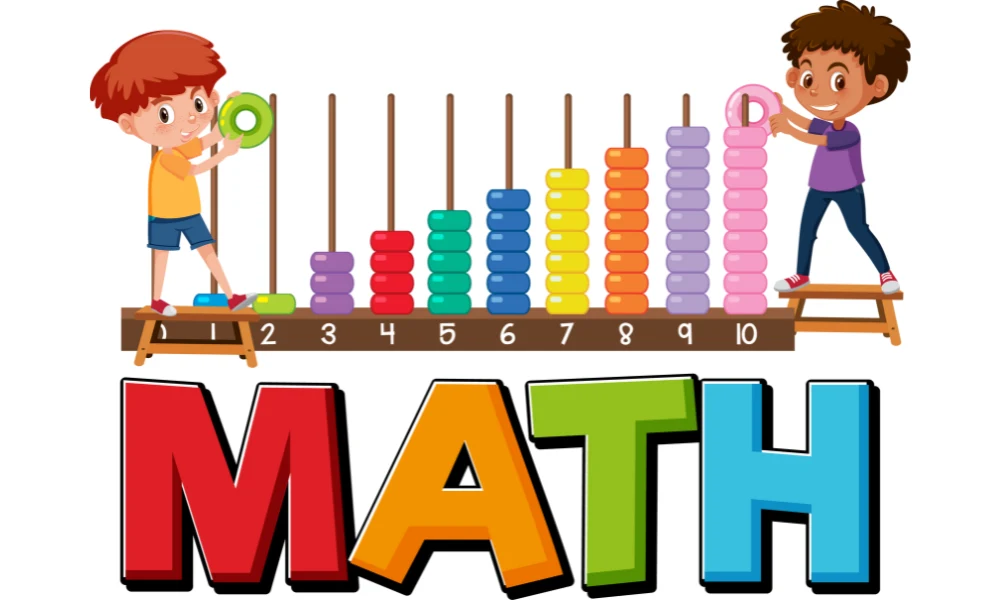Maths Lab Activities for A Level School Students
June 3, 2025 2025-06-03 16:08Maths Lab Activities for A Level School Students
Mathematics is more than just numbers on a page. For A Level students, especially those navigating the demands of international curricula like CAIE, the subject becomes increasingly abstract.
To help bridge the gap between theory and practice, schools have turned to an effective solution: maths lab activities. These hands-on engagements allow students to experience math beyond the textbook, reinforcing logic, visualization, and application.
In some of the Best A Level Schools in Mumbai, dedicated math labs have become a central part of learning. These labs offer structured activities that stimulate curiosity and enhance understanding of complex topics like calculus, probability, matrices, and trigonometry. The integration of maths lab activities makes abstract concepts more tangible and easier to grasp.
What Are Maths Lab Activities?


Maths lab activities refer to experimental and project-based exercises conducted in a specially equipped mathematics lab. These activities are designed to:
- Enhance conceptual clarity
- Foster analytical and critical thinking
- Connect real-life situations with mathematical principles
- Encourage collaborative learning and self-discovery
For A Level students, maths lab activities offer an experiential learning model that supplements traditional lectures and textbooks.
Importance of Maths Lab Activities in A Level Education:


A Level mathematics involves advanced concepts that often challenge students. Maths lab activities act as a scaffold, supporting learners as they transition from concrete to abstract thinking.
Key benefits include:
- Deeper engagement with complex mathematical theories
- Improved problem-solving and reasoning abilities
- Increased interest and confidence in the subject
- Opportunities to work on long-term investigative projects
This hands-on approach aligns with global educational goals, emphasizing skill development and applied learning over rote memorization.
Types of Maths Lab Activities for A Level Students:


A well-rounded maths lab curriculum includes activities across various branches of mathematics:
Algebra and Graphing:
- Creating 3D models of quadratic and cubic functions
- Using graphing tools to explore transformations
- Visual demonstrations of binomial expansion
Geometry and Trigonometry:
- Constructing models to prove theorems like Pythagoras’ Theorem
- Exploring circle geometry using paper cutouts and string
- Practical understanding of trigonometric identities through unit circle simulations
Calculus:
- Using dynamic geometry software to understand limits and continuity
- Visual estimation of derivatives using slope triangles
- Definite integrals represented through area under curves
Probability and Statistics:
- Real-life simulations like coin tosses, dice rolls, and card probabilities
- Data collection and analysis with charts, frequency polygons, and histograms
- Project work involving statistical modelling of school or community data
Vectors and Matrices:
- Manipulating 3D vector models
- Performing matrix operations using number cards
- Role-play activities to understand linear transformations
Technology in Maths Lab Activities:


Modern maths labs often incorporate digital tools such as:
- GeoGebra and Desmos for graphing and algebra
- Spreadsheets for statistics and numerical computation
- Programming in Python for mathematical modelling
The use of technology allows A Level students to build simulations, solve real-world problems, and understand abstract concepts with greater clarity. It also prepares them for higher education where computational tools are commonly used.
How Maths Lab Activities Align with the A Level Curriculum?
The A Level mathematics curriculum focuses on:
- Pure Mathematics
- Mechanics
- Statistics
Each area benefits from lab-based reinforcement. For example:
- Pure Mathematics: Lab activities on sequences and series, vectors, and complex numbers
- Mechanics: Simulations involving motion, force diagrams, and equilibrium models
- Statistics: Data collection, sampling, and hypothesis testing through hands-on experiments
Maths lab activities complement theoretical learning, offering deeper insight and stronger retention.
Collaborative Learning Through Labs
One of the most underrated advantages of maths lab activities is the opportunity for peer learning. Group tasks foster teamwork, communication, and collective problem-solving. When students explain concepts to one another during labs, it reinforces their own understanding and highlights different approaches to a problem.
Lab activities also help educators assess understanding in a non-traditional way. Observing how students interact with materials and each other provides insights that regular assessments might miss.
Real-World Applications and Projects
A Level students benefit when they can relate mathematical ideas to real-world scenarios.
Some impactful maths lab activities include:
- Budgeting projects simulating business or personal finance models
- Optimizing travel routes using graphs and algorithms
- Analyzing climate or population data using statistical methods
- Building architectural models with geometric accuracy
These activities prepare students for real-life problem solving, a skill highly valued in higher education and professional environments.
Encouraging Independent Exploration
Beyond scheduled activities, the best maths labs offer opportunities for individual research and exploration. Students can propose their own questions, build models, or simulate mathematical situations to test hypotheses. This inquiry-based approach fosters innovation and intellectual curiosity.
By integrating maths lab activities into regular learning, A Level schools create an environment where math is not just studied but experienced. This tactile, visual, and interactive approach brings numbers to life, making mathematics a subject of exploration rather than intimidation.
Whether it’s proving theorems using paper cutouts or creating Python programs to solve calculus problems, these activities offer a rich, hands-on experience that enhances conceptual understanding, creativity, and long-term retention.
For parents and educators looking to enrich the mathematical journey of A Level students, embracing the full potential of maths lab activities is not an option but a necessity.
Frequently Asked Questions (FAQs)
Ques 1. Why are maths lab activities important for A Level students?
Ans. They make abstract concepts like calculus and vectors more tangible, improving understanding and retention.
Ques 2. Are maths lab activities aligned with the A Level curriculum?
Ans. Yes, they support Pure Mathematics, Mechanics, and Statistics components by offering applied, project-based learning.
Ques 3. Can maths lab activities improve exam performance?
Ans. Yes. By deepening conceptual understanding, they indirectly lead to better problem-solving and exam results.
Ques 4. How frequently are maths lab activities conducted in A Level schools?
Ans. This varies, but schools typically integrate them weekly or bi-weekly as part of the core math program.
Ques 5. Are there any statistics projects included in maths lab activities?
Ans. Yes. Students often analyze real-world data, create histograms, and conduct hypothesis testing.




